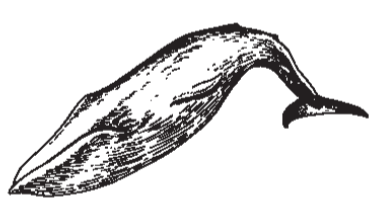When the Hall of Ocean Life at New York’s American Museum of Natural History opened to the public in 1933, the New York Times reported that the “general appearance, architecturally, is somewhat suggestive of a cathedral,” and indeed the cavernous Beaux Arts hall, inspired by London’s Crystal Palace, was evocative in scale of the oceans it purported to glorify. However, as in many houses of worship, form rather upstaged content. Despite twenty-five years’ devotion to gathering material and data from across the globe (sea-creature measurements, skeletons, corpses to be pickled for later study and re-creation), the new hall was palpably devoid of curatorial power. The Times seemed more impressed by the paint job on the ceiling—which mimicked a bright blue sky, white clouds lazing sixty feet above the floor—than by any of the actual exhibits.
What had the museum been thinking when, like Icarus in a snorkel, it set out to emulate Poseidon? What contents could ever become such a space? So vast was the room that many exhibits—including the skeletons of most of the world’s largest whales, from gray to right to finback to sperm—suspended from above by airplane cable (a big improvement over the conspicuous iron rods used to hang exhibits in the older halls), and the likewise-soaring lifesize lifelike models of killer, beluga, and bowdoin, of narwhal and giant squid and bottleneck porpoise, any one of which would have warranted top billing in many a respectable museum show, not to mention the floorbound Pacific walri, the obese and hideous manatee, the fifteen thousand mollusks, the forty-ton Bahamian coral reef boasting hundreds of species frozen in immaculate harmony, the majestic and almost extinct Guadeloupian elephant seal with its flapping muzzle and pendulous trunk whose terrifying-
All these hefty marvels had the cumulative effect of a baggie of minnows let loose in a Roman bath. They could not even compete with the manmade creations of muralist John P. Benson, who (under the direction of Dr. Robert Cushman Murphy, scientist on board the New Bedford whale ship Daisy during its 1912-13 expedition) had rendered a series of grand lunette-shaped panels depicting A Day in the Life of a Sperm Whaler, intended to awe and educate viewers on every aspect of that brave trade, from “The Chase” to “The Attack” to “Towing the Carcass.” (Or was the idea from the get-go to offset lame furniture with epic wallpaper?) For fans of three dimensions, the Hall of Ocean Life was from day one a colossal failure. Of its specimen lineup’s many would-be glories, the most striking by far was a perfect pair of Con gloria maris, one of the rarer...
You have reached your article limit
Sign up for a digital subscription and continue reading all new issues, plus our entire archives, for just $1.50/month.
Already a subscriber? Sign in





